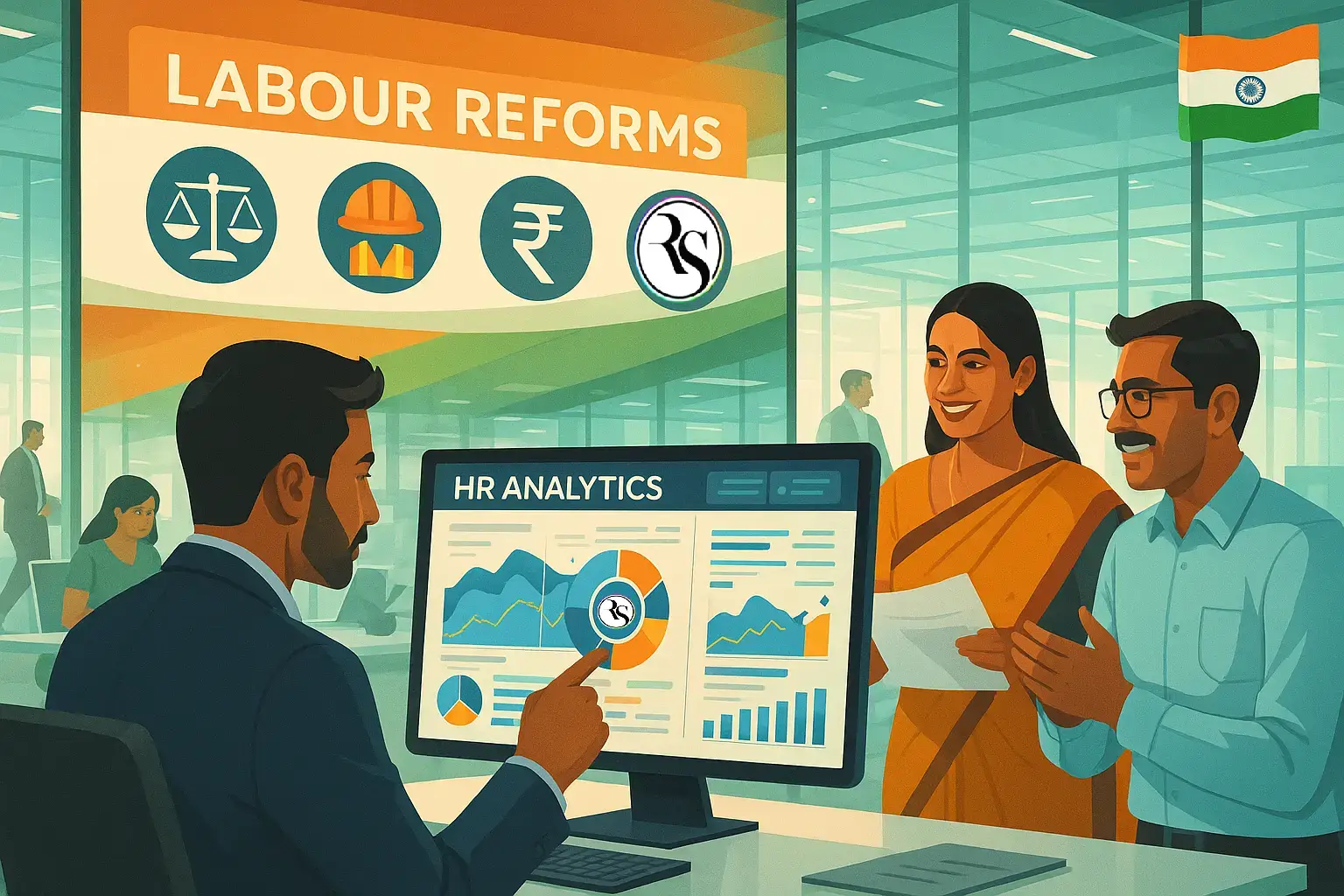India is undergoing a major shift in its labour landscape. With the introduction of four new labour codes—the Code on Wages, Industrial Relations Code, Social Security Code, and the Occupational Safety, Health & Working Conditions Code—the country is moving toward a more modern and simplified framework for labour laws.
These reforms aim to bring greater clarity, consistency, and protection to both employees and employers. But with change comes complexity, and for HR professionals, this new environment presents a unique blend of opportunities and challenges.
To stay ahead, HR teams need more than just compliance checklists—they need strategic foresight. This is where predictive analytics comes in, offering HR the tools to anticipate, adapt, and lead.
Making Sense of India’s New Labour Codes
The new codes are designed to replace a maze of outdated laws with a cleaner, more consistent set of rules. Here’s a quick look at what’s changing:
- Unified Wage Definitions: A standardized definition of “wages” means less confusion and fewer disputes around salary calculations and benefits.
- Updated Industrial Relations: Fixed-term employment, faster dispute resolution, and clearer rules for strikes and layoffs create more flexibility and transparency.
- Broader Social Security: Coverage is now extended to gig workers and platform-based jobs, acknowledging the shift in how work is done.
- Improved Safety and Health Standards: More rigorous workplace safety, health checks, and emergency protocols aim to create safer work environments.
These changes call for major updates in HR policies—from payroll and employee classification to hiring strategies and workplace practices. Non-compliance is not just a legal risk—it can damage a company’s reputation.
How Predictive Analytics Can Help HR Lead the Way
Predictive analytics uses data to forecast future trends and behaviors. For HR, this means gaining insights into how labor reforms will impact your workforce and how to prepare effectively.
Here’s how it can make a difference:
1. Staying Compliant and Avoiding Risks
- Spotting Compliance Gaps Early: By analyzing past grievances, audit results, and HR trends, predictive models can highlight areas that are likely to face compliance issues—before they become problems.
- Simulating Policy Impacts: Want to see how changes in wages or work hours might affect your workforce? Predictive tools can model different scenarios to help you make fair, effective policy decisions.
2. Smarter Workforce Planning
- Forecasting Talent Needs: Looking ahead, what kind of roles will you need? How will the labor codes affect workforce size and composition? Predictive analytics helps you prepare your hiring and upskilling plans accordingly.
- Identifying Skill Gaps: By mapping current skills against future needs, HR can design targeted training programs and reskilling initiatives.
- Planning for Leadership: Performance data and career trajectories can point to high-potential employees, making succession planning more data-driven and dependable.
3. Improving Talent Management and Employee Experience
- Better Hiring Decisions: Predictive analytics can identify which candidates are likely to succeed and stay, making hiring faster and more accurate.
- Boosting Retention: By analyzing engagement levels, job satisfaction, and potential “flight risks,” HR can take proactive steps—like tailored development plans or flexible work options—to keep talent on board.
- Personalizing the Employee Journey: From training programs to wellness initiatives, analytics can help design employee experiences that resonate personally and boost morale.
- Advancing Diversity & Inclusion: Data can reveal patterns of bias in hiring or promotions, allowing HR to build more equitable workplaces in line with the spirit of the new labour codes.
Key Challenges to Keep in Mind
Despite the benefits, predictive analytics comes with its own set of considerations:
- Data Quality: Insights are only as good as the data behind them. Ensuring clean, integrated, and comprehensive HR data is essential.
- Privacy and Ethics: Using employee data responsibly is non-negotiable. HR must follow privacy laws and maintain transparency.
- Avoiding Bias: If historical data contains biases, predictive models can unintentionally reinforce them. Regular audits and ethical oversight are crucial.
- Skills Gap in HR: Implementing predictive analytics requires new capabilities in data science and technology. Training or partnering with experts may be necessary.
- Change Resistance: Employees may be hesitant to trust new technologies. Transparent communication and change management strategies are key to building acceptance.
In Conclusion
India’s labour code reforms signal a new era for workforce management. For HR, they offer a chance to move from reactive compliance to proactive strategy. Predictive analytics can serve as a powerful ally—helping HR leaders make smarter decisions, stay ahead of regulatory changes, and create better workplaces.
By embracing data and staying agile, HR can not only navigate these reforms but also use them as a springboard to build more resilient, inclusive, and future-ready organizations.
